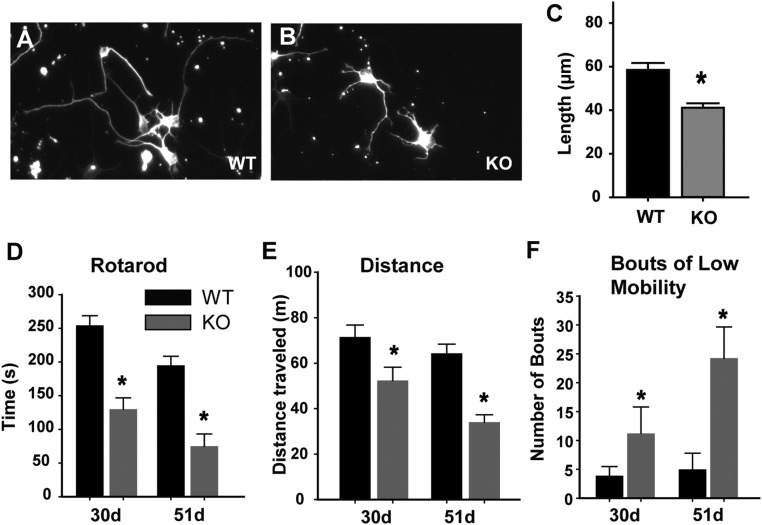Fig. S1.
Phenotypic characteristics of the RTT rat. (A–C) Effects on CNS neurite outgrowth (A) in cell culture, cortical neurons from WT P0 rat showed characteristic neurite outgrowth. (B) Neurite growth from cortical neurons of P0 Mecp2−/y KO rats were stunted. (Magnification: 100×) (C) Quantification revealed that mean neurite outgrowth in KO neurons is significantly reduced compared with the WT (*P < 0.001). (D–F) Effects on motor activity. (D) Behavioral testing was performed at 30 and 51 d of age to assess whether expected motor deficiencies occurred in rats with the Mecp2−/y genotype (30 d, n = 5 animals per group; 51 d, n = 4 animals per group). Motor coordination was tested using a Rota-Rod treadmill (MedAssociates) rotating at a speed of 4 rpm and ramping to a maximum speed of 40 rpm over an acceleration period of 300 s. Each animal was tested three times. KO rats showed a substantial deficit in motor coordination (*P = 0.005). (E) Relative activity was assessed by allowing rats 10 min of free run time in the novel environment of a force plate actimeter (BASi). Total distance traveled in meters was lower in the RTT rats (*P = 0.026). (F) Bouts of low mobility represent periods of 10 s or greater when the rat’s movements are confined to a 15-mm radius during the 10-min test period. KO rats showed more bouts than WT (*P = 0.009 by Mann–Whitney U test).

